Buchenwald photographs
[back] Buchenwald
[back]
Holocaust
revisionism
[Typhus victims were stripped after death in order to burn the clothing
and destroy the typhus-bearing lice.]See photos: Aerial
Auschwitz Belsen
Belzec Dachau Faked
Propaganda
The hooks
The trailer of bodies

The infamous faked display table at Buchenwald. See:
BUCHENWALD
A Dumb Dumb Portrayal Of Evil Nazi
Shrunken Heads

Prosecution witness Dr. Kurte Sitte identifies 3 pieces of tattooed skin

American Generals view dead bodies left out for a week
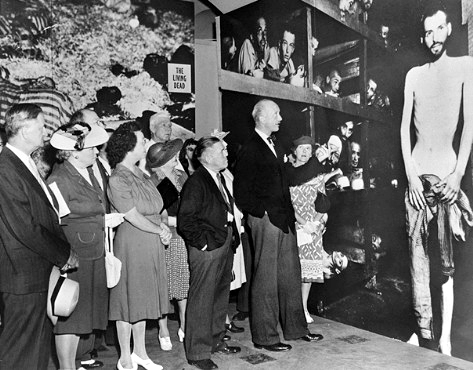
After World War II, no expense was spared to educate the American public
about the evil perpetrated by Hitler's Third Reich and the horror of the
concentration camps. The photograph below shows a traveling exhibit of
photographs, enlarged to twice the size of life. This photo in the exhibit,
entitled "The living dead" was taken at Buchenwald.
The Trial of Ilse Koch

Crematorium at Buchenwald, Buchenwald museum 1998.
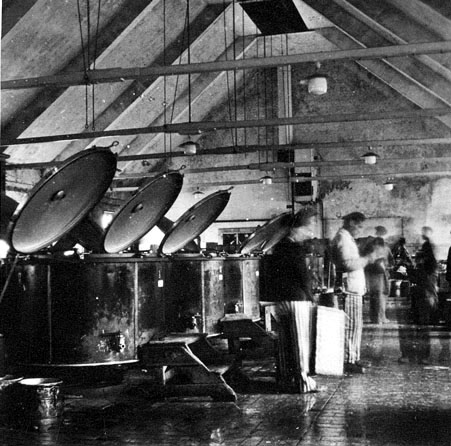
Buchenwald kitchen, April 1945 Photo Credit: Dan
Curtin
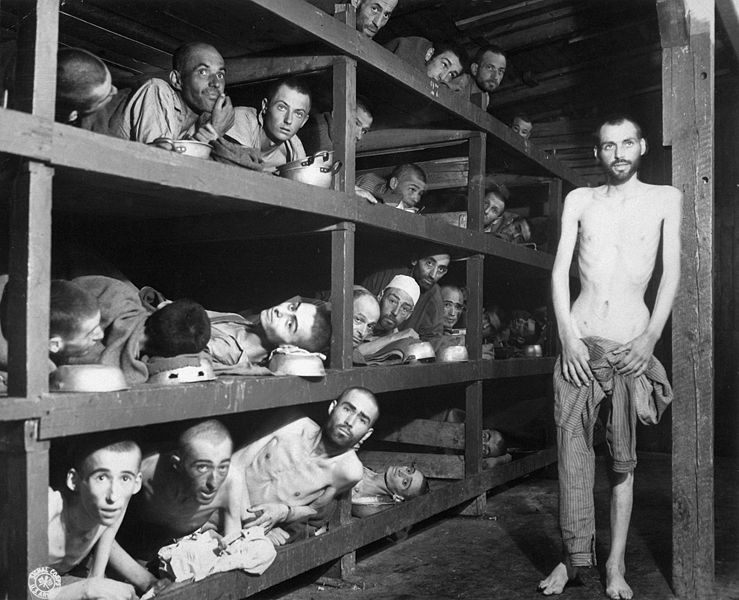
Forced laborers in Buchenwald (Elie Wiesel is
allegedly 2nd row from the bottom, 7th from left);
April 16, 1945
See: [2009] Auschwitz Survivor
Claims Elie Wiesel is an Impostor by Henry Makow Ph.D.
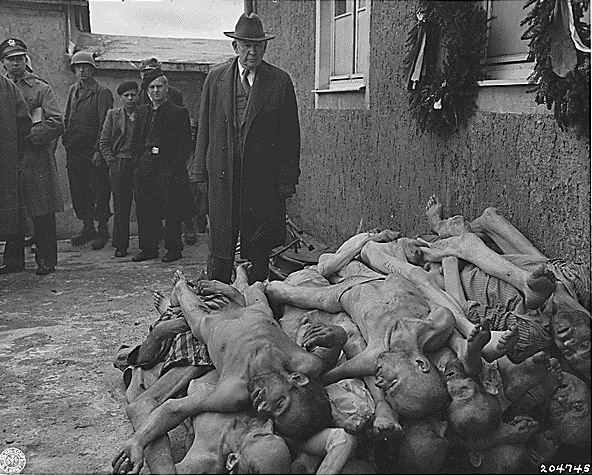
US Senator Alben W. Barkley looks on after Buchenwald's liberation. Barkley
later became Vice President of the United States under Harry S. Truman.


The prisoners' orchestra in Buchenwald concentration camp, 1941 - Apr 11, 1945.
USHMM (85881), courtesy of Gedenkstaette Buchenwald.1

Young survivors of the Buchenwald concentration camp behind a barbed wire fence.
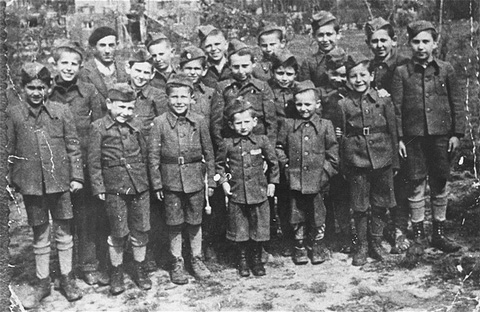
Child survivors dressed in clothes made from German uniforms
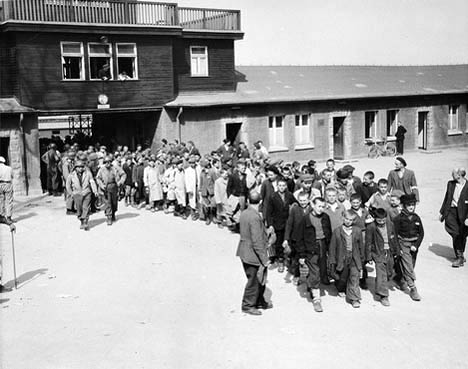
Liberated orphans march out of the main gate of the Buchenwald camp.
904 healthy children at Buchenwald,

Young survivors in the Buchenwald camp, May 1945
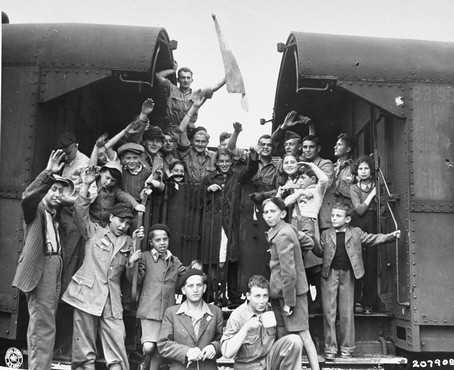
Young survivors leaving Buchenwald on a train
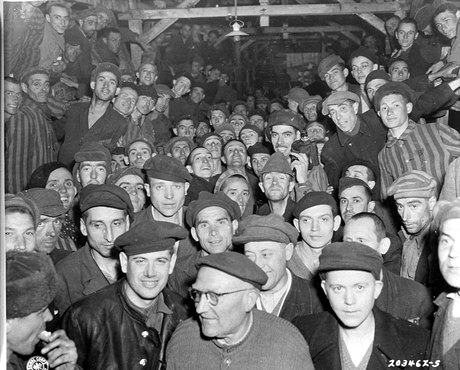
US Army Signal Corp photo of Buchenwald survivors, April 14, 1945
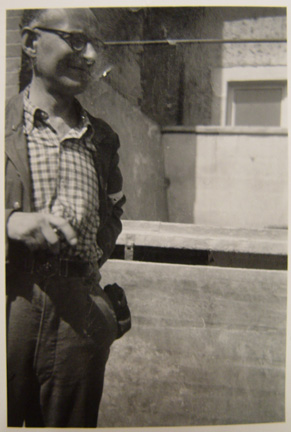
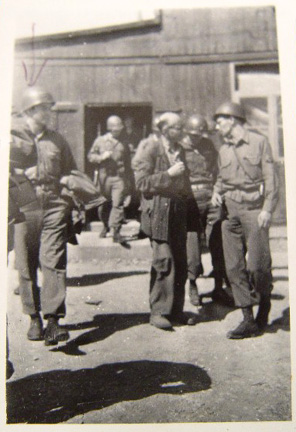
The former Buchenwald prisoner shown in the photo above is
Joseph Anselma Brau, who was a French political prisoner. He was the chief
doctor at the camp after Buchenwald was liberated.

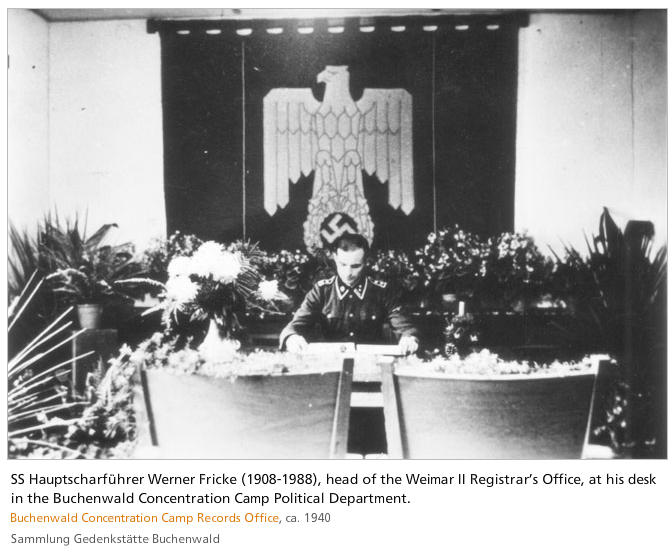

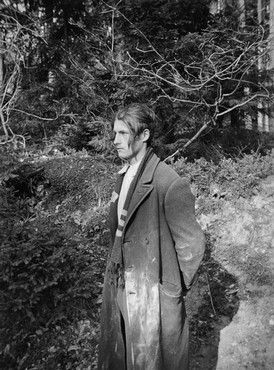
Jan Sowka awaits execution in the forest near Buchenwald
concentration camp.
On April 26, 1942, a Polish forced laborer,
who worked at Bauern Schmidt's couryard was beaten to the point
of unconsciousness by a German policeman, Albin Gottwald. Two
Poles took revenge on Gottwald and stabbed him to death on a
forest path between Poppenhausen and Einoed. The two Poles then
escaped. One of the two Poles, Jan Sowka (b. 10/19/22 in
Thayngen, Switzerland) was apprehended shortly after his escape.
On May 11, 1942, nineteen prisoners from Buchenwald were taken
to the place in the woods where Gottwald's body had been found.
The Buchenwald SS built three gallows -- two conisted of ten
hooks each, and one was a single gallows. The nineteen Polish
prisoners were positioned behind the gallows, and Jan Sowka
stood on the opposite side. The executions began at 10:50 where
the prisoners and Jan Sowka were hanged one after another on the
single gallows. At the end, they were all hanged from the two
group gallows. Hundreds of Polish forced laborers from the
surrounding area were rounded up and forced to watch the
executions.
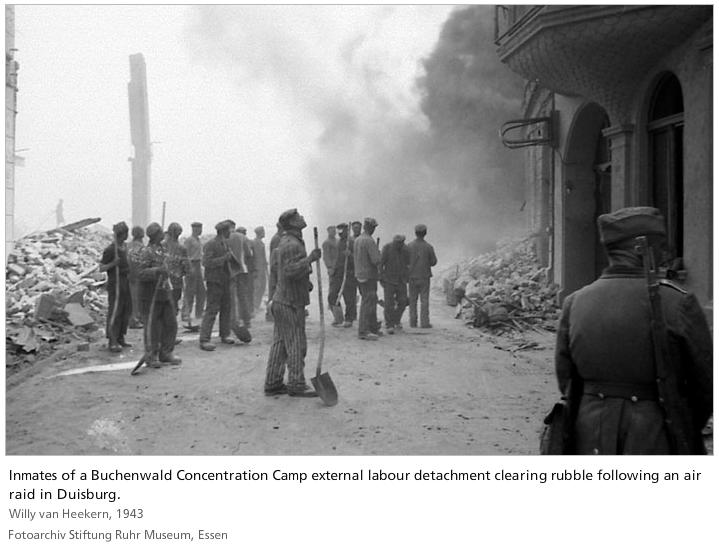
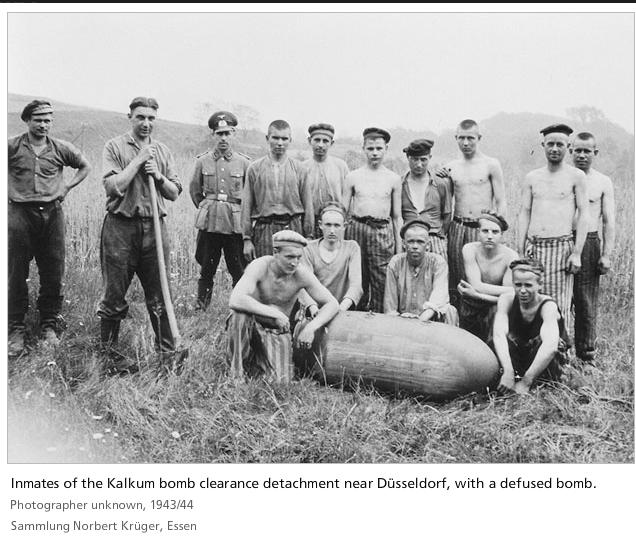
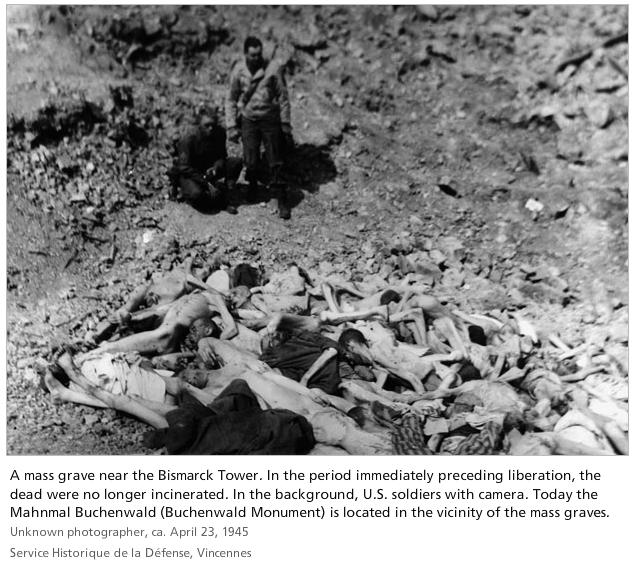
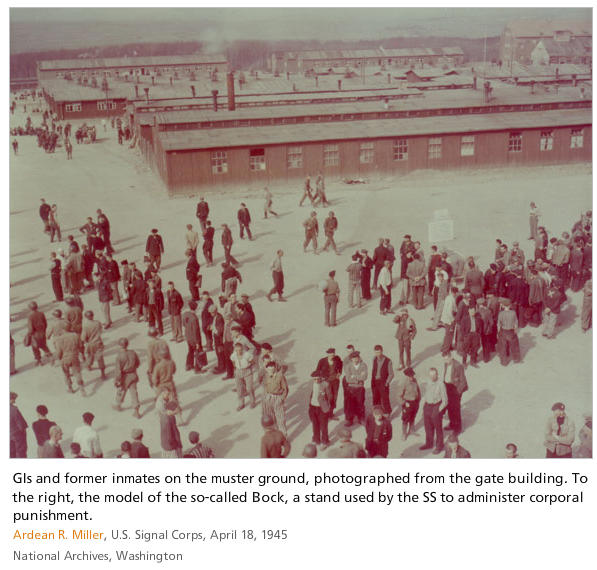

Wasn't Auschwitz meant to be an extermination camp?
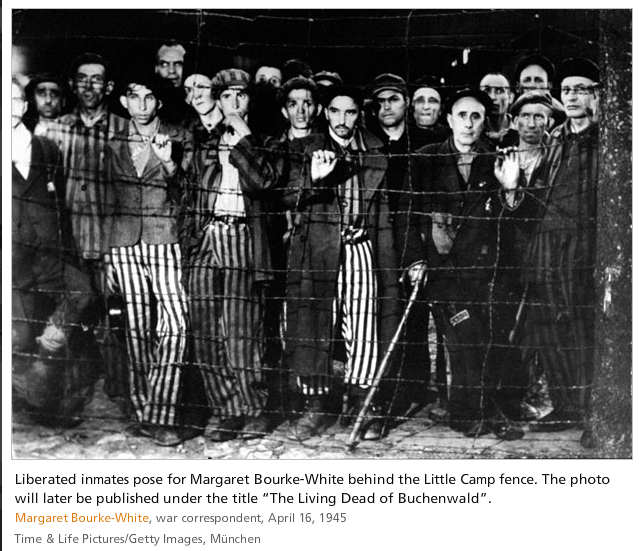
Not exactly that dead looking. Captioned just
Communist prisoners below:
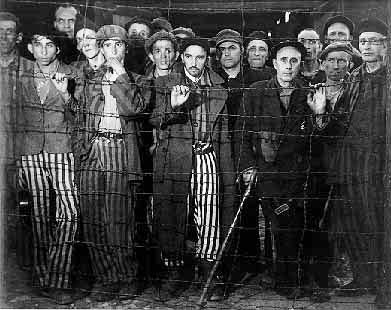
Communist prisoners at Buchenwald, April 15, 1945

Not exactly living dead here either.

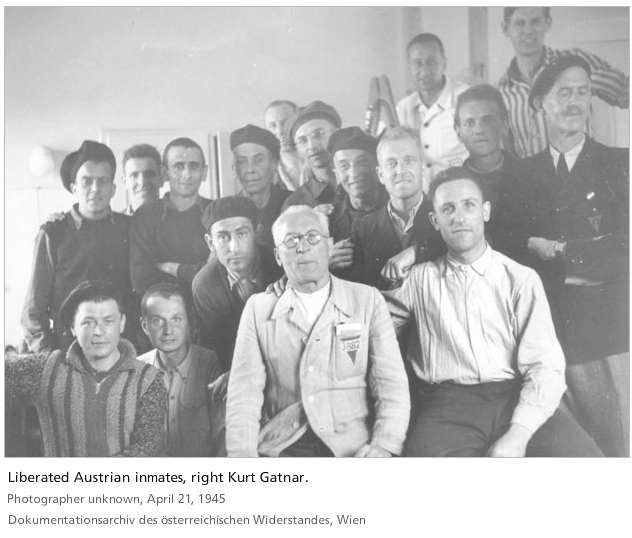

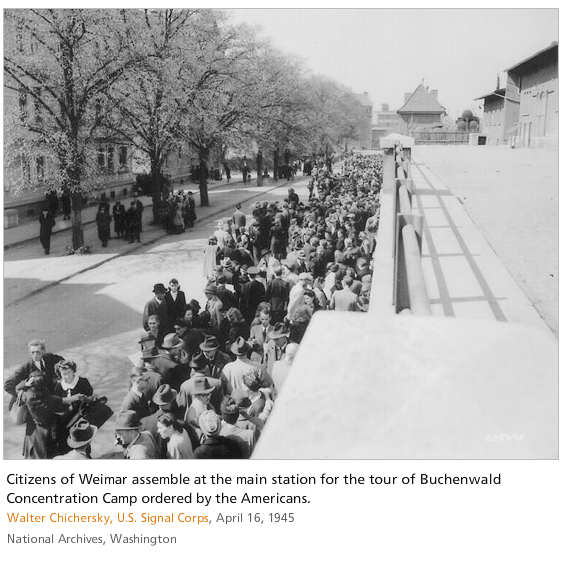
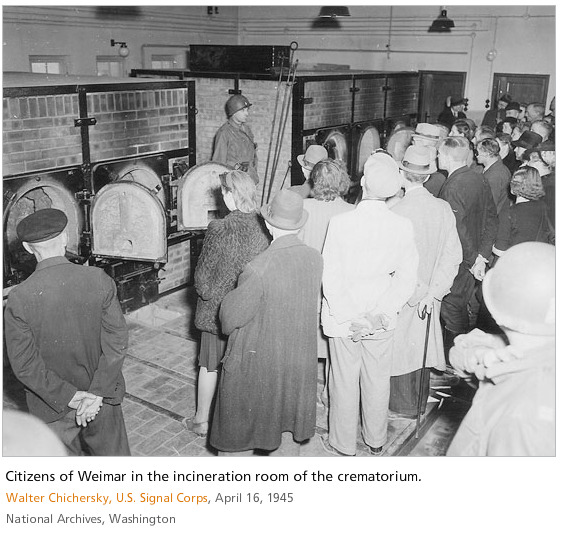
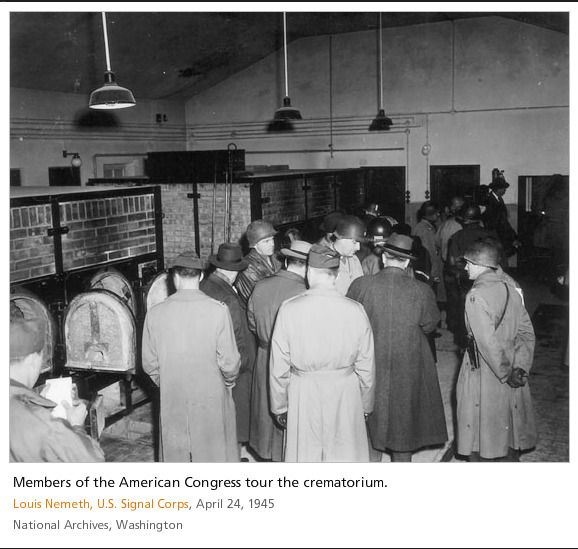
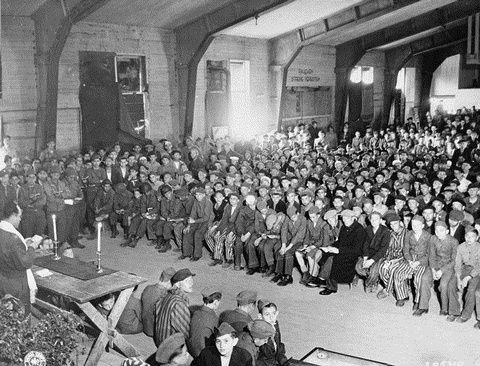
An American Army Rabbi, Hershel Schacter, held Shavuot service on May 18, 1945
Buchenwald was not set up as a camp for Jews, but there
were 4,000 Jews among the 21,000 prisoners there when the camp was liberated.
They had been brought to Buchenwald after the death camps in the East were
abandoned. On November 10, 1938, following the pogrom
in Germany and Austria known as Kristallnacht, there were around 10,000 Jewish
men brought to Buchenwald. They were released around two weeks later after
promising to leave Germany or Austria within six months.
Buchenwald Survivors
The hooks
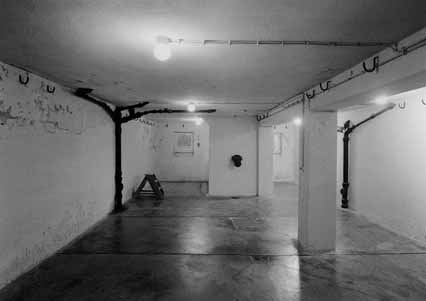
"Execution room" in basement of crematorium building.
This is an underground morgue.

Some of the Buchenwald prisoners told the American
liberators that the hooks were used to hang the bodies to keep them straight
before rigor mortis set in. At Dachau, the bodies were hung in front of the
ovens to keep them straight before they were cremated.
Buchenwald Survivors

The
trailer of bodies
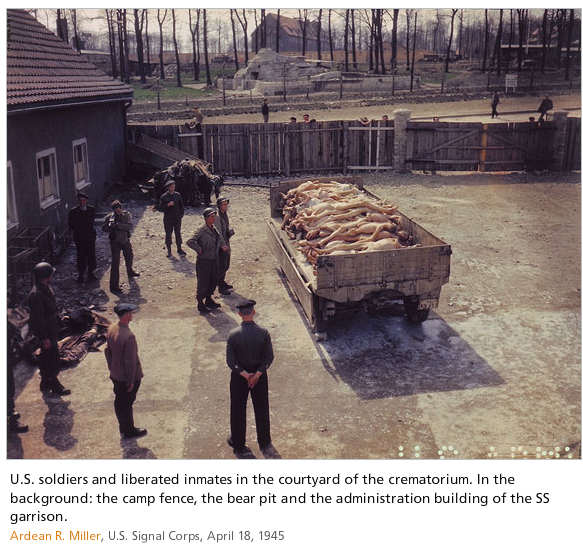
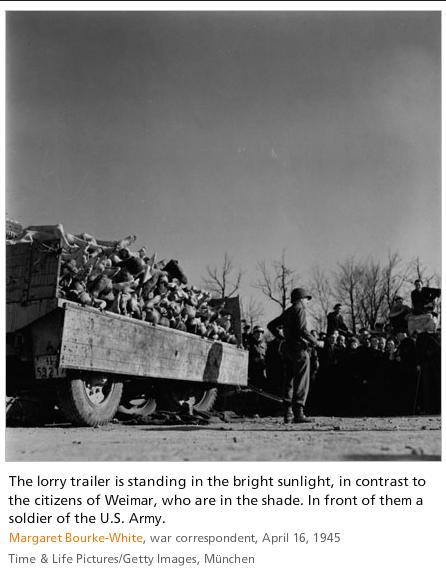
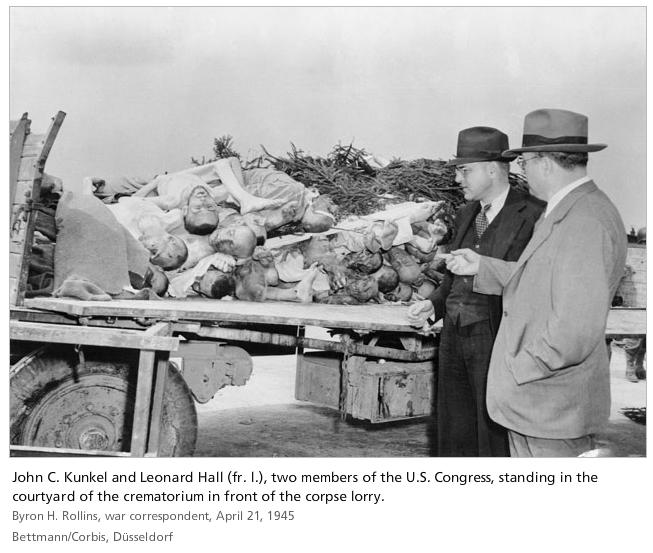
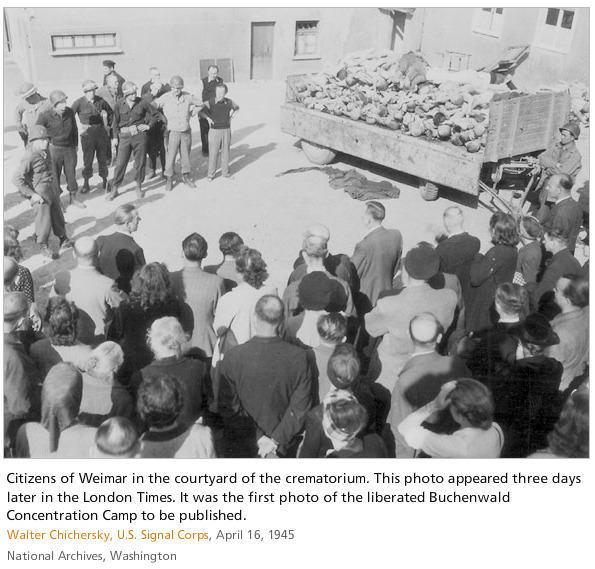
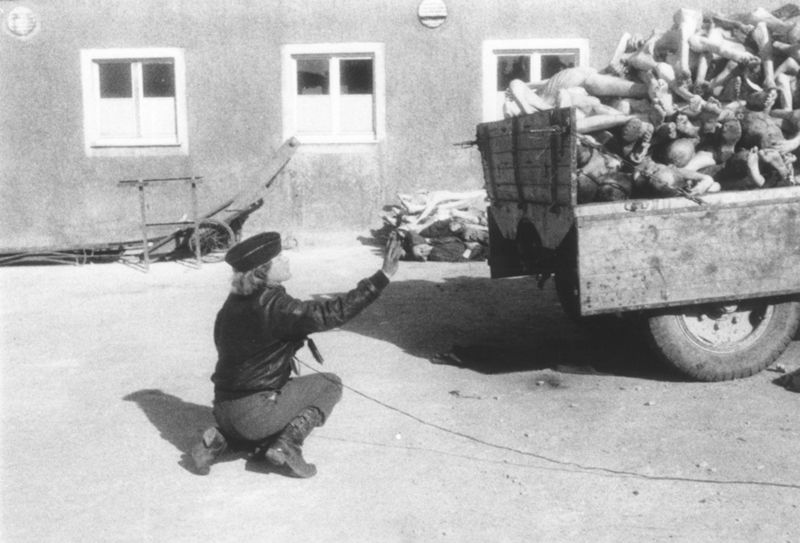
Life magazine photographer Margaret Bourke-White
prepares to take a photograph of a wagon piled with corpses in the newly
liberated Buchenwald concentration camp.
Lieutenant Colonel Parke O. Yingst was born in Hummelstown, PA in 1908. In
1930 he graduated from the Colorado School of Mines and joined the Army Corps of
Engineers as a reservist. He subsequently went to work in Venezuela. During this
period, his reserve commission expired. After returning to the United States in
1940, Yingst applied for recommissioning so that he could join the fight against
Hitler. In 1942 he was ordered to active duty as a First Lieutenant in the Army
Corps of Engineers. On April 4, 1944 he was promoted to Major, and in July, he
assumed command of the 281st Engineer Combat Battalion. In April 1945 Yingst was
present at the liberation of the Ohrdruf and Buchenwald concentration camps. He
was eventually promoted to Lieutenant Colonel prior to his separation from the
army for medical reasons.
Photographed by Colonel Parke O. Yingst. Buchenwald, [Thuringia] Germany,
April 1945.
United States Holocaust Memorial Museum.
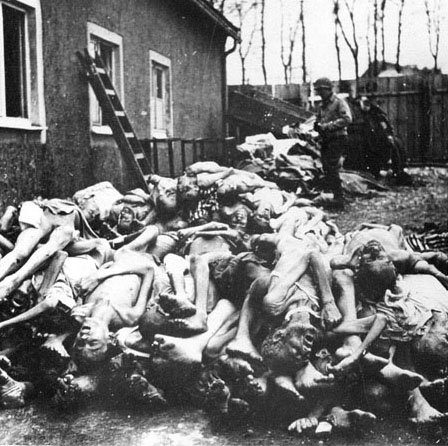
Bodies piled up outside the crematorium
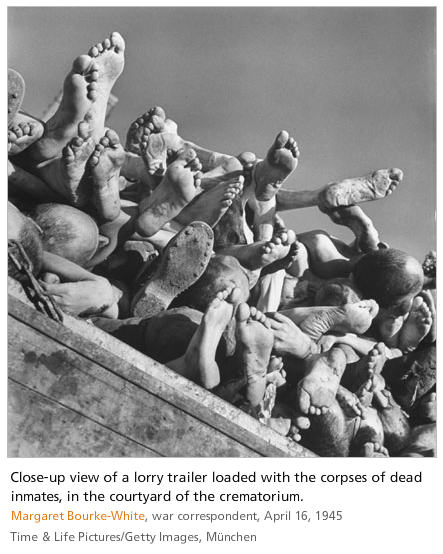
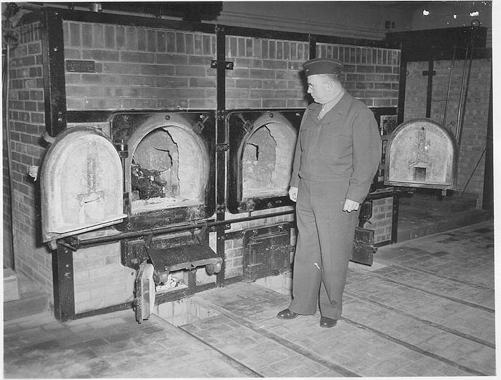
Bishop visits horror camp. Bishop G. Bromley Oxnam,
Methodist Bishop of New York and Pres. Of federated
council of churches of Christ in America, and a
party of U.S. Army chaplains, tour the infamous
Buchenwald concentration camp, on the outskirts of
Weimar, Germany. With the Bishop on his tour were:
Chap. (Col.) M. O. Beebe, Theater Chaplain MTO, USA;
Chap. (Maj.) Albert S. Trickett, Deputy Theater
Chaplain, MTO, USA; Chap. (Maj.) E. I. Carriker, 9th
Air Force; Chap. (Col.) H. Kellogg, First U.S. Army;
and the Bishop's son, Lt. R. F. Oxnam, 3rd Infantry
Regiment, 106th Infantry Division.
27 Apr. The Bishop looks into furnace in
crematorium. A burned body is partially visible.
|

Bishop visits horror camp. Bishop G. Bromley Oxnam,
Methodist Bishop of New York and Pres. Of federated
council of churches of Christ in America, and a
party of U.S. Army chaplains, tour the infamous
Buchenwald concentration camp, on the outskirts of
Weimar, Germany. With the Bishop on his tour were:
Chap. (Col.) M. O. Beebe, Theater Chaplain MTO, USA;
Chap. (Maj.) Albert S. Trickett, Deputy Theater
Chaplain, MTO, USA; Chap. (Maj.) E. I. Carriker, 9th
Air Force; Chap. (Col.) H. Kellogg, First U.S. Army;
and the Bishop's son, Lt. R. F. Oxnam, 3rd Infantry
Regiment, 106th Infantry Division.
27 Apr. Maj. Trickett and the Bishop in the
execution chamber.
|

22 May. Small Russian girl in the displaced persons
camp at camp Ohrdruf sub camp,
Germany, eats a slice of brown bread as she awaits
the arrival of Army vehicles which will take her
home. Before her departure, she was deloused,
registered, washed and fed.
|
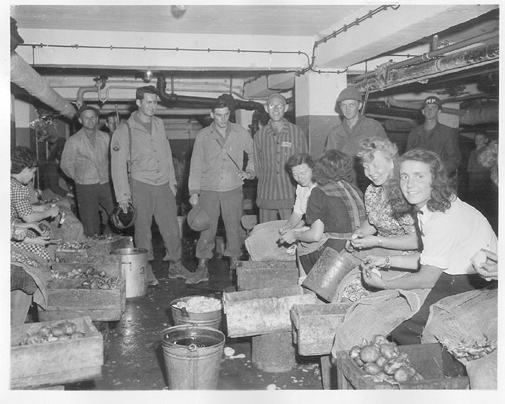
27 May. Soldiers tour of Buchenwald. Left to right:
Tec 5 Jack Levin, Pfc. Miles and Pfc. Bienz, watch
German women civilians brought from the town of
Weimar, Germany, peeling spuds for the liberated
prisoners of Buchenwald. Soldiers are with 46th
Armored Infantry Battalion, 5th Armored Division,
9th U.S. Army.
|
Sources:
Edward R. Murrow Report
Exhibits at
Buchenwald
904 healthy children at Buchenwald
http://www.buchenwald.de
United States Holocaust Memorial Museum

















































